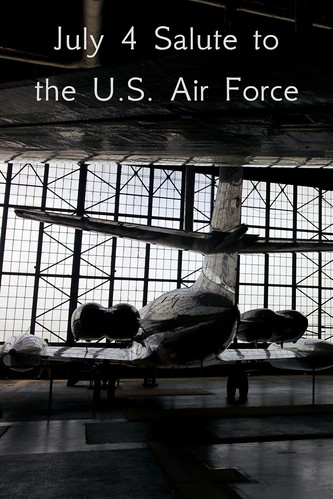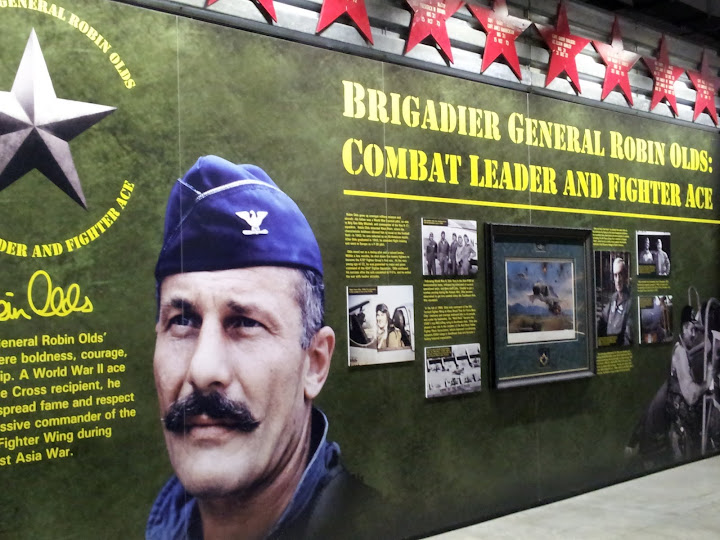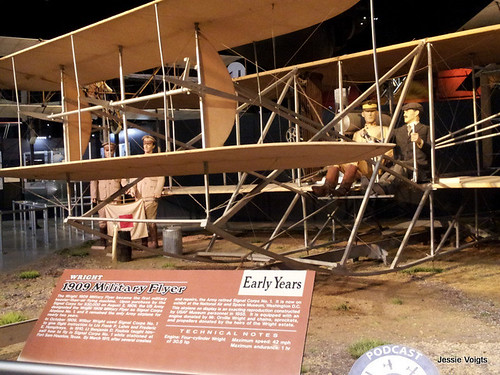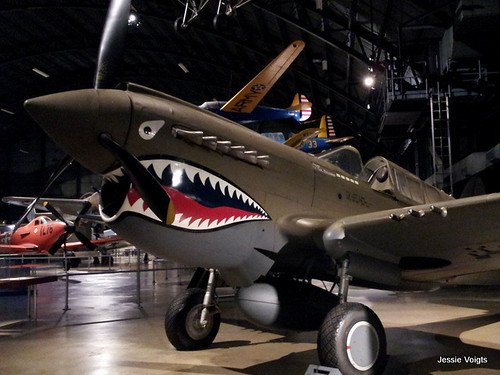It’s a visual extravaganza of the history of flight, and the U. S. Air Force. It’s worth days of your time. It’s the National Museum of the U.S. Air Force, located in Dayton, Ohio. It’s the world’s largest and oldest aviation museum – and it is an extremely powerful experience.

Both my father and my husband’s father were in the U. S. Military. We were both born on an Air Force base.
But until our family visited the Air Force Museum, I had no idea of the deep cultural impact that the Air Force has on us, as a nation.
Visiting this museum was a lesson in courage, research and development, continuous technological advances, war, the military machine, humanity, and history.

Tribute Wall
From the moment you access the sidewalk leading to the museum, you’re reminded of both the importance of honoring those who served, and the great sense of history and the millions who have served in the Air Force. Benches honoring those who served line the walkways, and the entrance is a soaring glass atrium that is welcoming and open.
There’s an information booth where you can get a wheelchair, electric scooter, strollers, and plenty of information. The biggest piece of information we learned there was to sign up as quickly as possible for the limited tour of the Presidential Hangar. So we did, and were the last ones to sign up for the day.

Pioneering aircraft
The National Museum of the U. S. Air Force is located in three extremely large hangars, an airfield, and two other hangars (Presidential and R&D) located on Wright-Patterson Air Force Base next door.
The main hangars are divided into time periods – early flight, WWII, Korean War, Southeast Asia, Cold War, and Space and Aeronautics. There is also a small and touching section on the Holocaust.
The hangars are packed to the brim with aircraft of all sorts, displays, tons of signage with history and aircraft details, and many exhibits about the Air Force members, from clothing to sense of humor (all those crazy airplane names!) to commitment to a larger purpose.
We wandered the main hangars, soaking in this history, amazed at the ingenuity of the service members, and impressed by the depth of culture and purpose in the Air Force.

Shark Fighter Plane
What was most amazing, and powerful, was the sense of community here. The museum is staffed by volunteers, mostly Air Force veterans. While the visitors aren’t only Air Force, you do see groups of cadets with an eagerness to learn, and veterans talking and laughing together, reminiscing near aircraft they probably were very familiar with.
You also see veterans with faraway looks in their eyes, remembering.
Finally our time came up to visit the Presidential and R&D Hangars, on base. We boarded a bus for the short ride over there. Once you’re in, you’ll be surprised by the amount of aircraft that they have packed in. On the Presidential side, there are many versions of Air Force One, the aircraft that is designated for the President. You can walk through the various AF Ones, and see the development of technology and more comfortable seating (!) as time went on, as well as President Roosevelt’s small elevator, so that he could get into the plane easily. The Air Force One plane entitled “Sacred Cow” was there. Sacred Cow was the plane that FDR and Truman used – and the one where, on July 26, 1947, President Truman signed the National Security Act of 1947, which established the Air Force as an independent military service. Thus was the Air Force born, on the Sacred Cow.
I was also impressed with the ideas within the Research and Development hangar, which included a vertical jet (for vertical takeoff), NASA planes, and all kinds of experimental aircraft. If you’re into motors and alternative aircraft, this is the place for you.

Our time at the US AF Museum was too short, and we’ll be back. We have been talking about our visit almost non-stop, and headed to the library once we got home to learn more.
We found two books that helped explain what we had seen, and spurred our interest in learning about the Air Force further:
Air Force One: The Aircraft that Shaped the Modern Presidency, by Von Hardesty. This book is an in-depth look at Air Force One, with many photographs of the interiors (and how they have changed over time), as well as the history of how each president utilized the aircraft. From meetings with global historical significance to the small homey details of each president as a person on board, this book is an extremely interesting read.
The U.S. Air Force, by Sandy Donovan. This book for kids is a great visual showcase of the history, recruitment, training, and life in the Air Force. It also shows famous veterans, the Thunderbirds, and has a great bibliography that we’ve been using. I wish we’d read this before we went, so that our daughter could have had some idea of the history, purpose, and culture of the Air Force.
The National Museum of the USAF is free. There are three extra things that you can pay for – an IMAX film, and two different flight simulators. I’d plan on spending at least one full day there – plan on more if you are able. It’s a fascinating place of learning, and shows, in-depth, a part of United States history that many are unaware of.
You can also take a virtual tour and listen to podcasts on the US AF history and museum tours at the museum’s website.
Read more: https://www.wanderingeducators.com/best/traveling/visiting-us-air-force-museum.html
Note: This was originally published on A Traveler's Library, which is now closed.
All photos courtesy and copyright Wandering Educators
